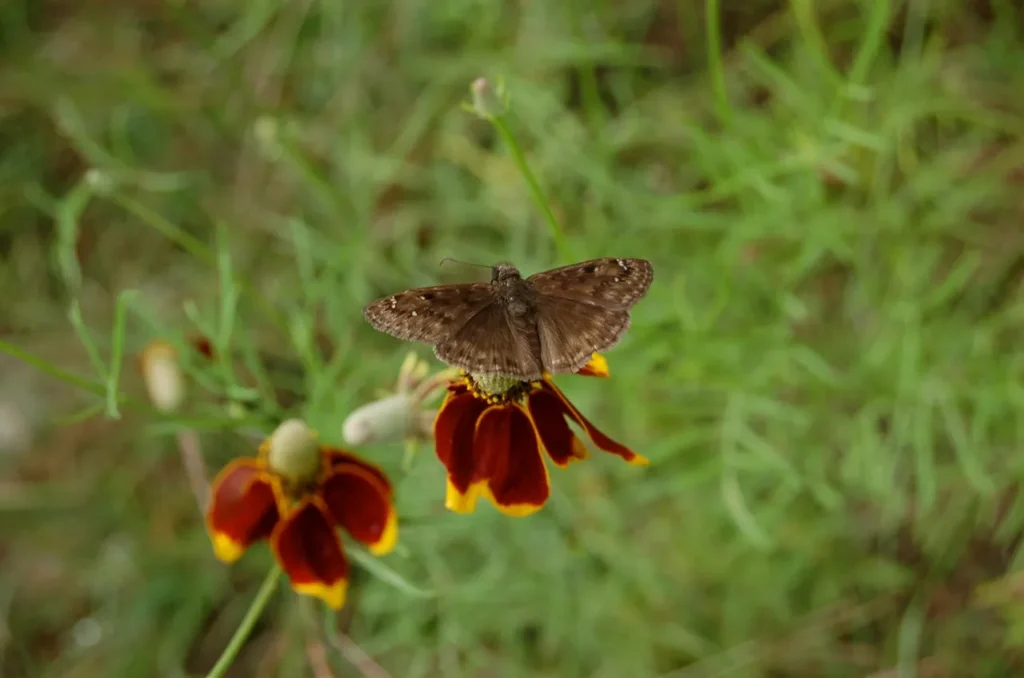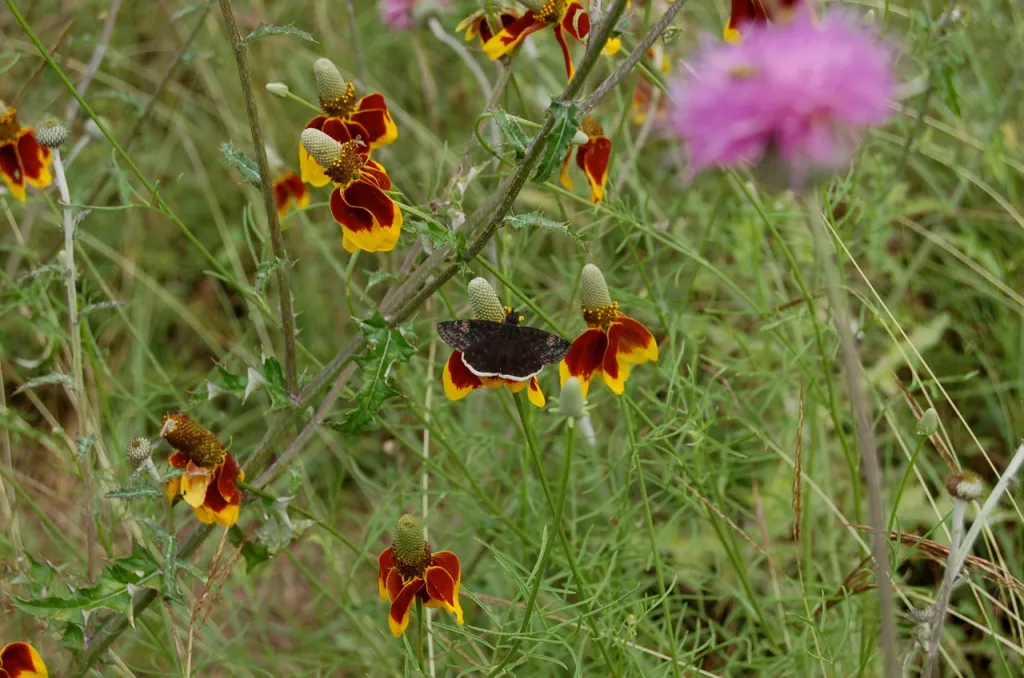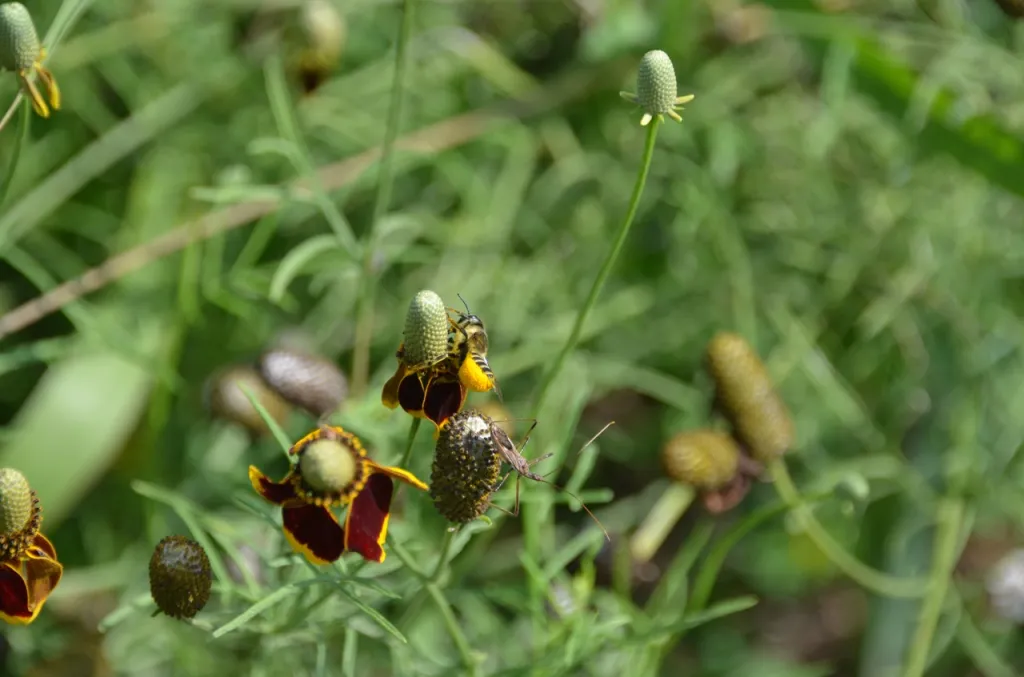If you ever become a member of NPSOT (Native Plant Society of Texas), and specifically a member of a Hill County chapter such as the Boerne Chapter, you will not have a long tenure at any meeting before you stumble upon a discussion of deer resistant or deer proof plants. To borrow from a much older source “when one or two NPSOTers are gathered together, there shall be talk of deer and their appetites”.

Of course everyone in NPSOT has a different opinion based on individual experiences and all our opinions are put forward with persuasive intent. But we would have a greater chance of success in trying to decide on a definitive political position or a religious denomination than we do of deciding which plants deer will eat.
I think that there may only be one explanation. I have come to the conclusion that on certain nights throughout the year, deer congregate at numerous meeting spots, smoke cigarettes and decide which plants they will eat at particular residences. Decisions are made not upon the basis of taste, smell, availability or nutrition, but purely on the basis of what meal is likely to most irritate and/or confuse particular homeowners.
So with that introduction I thought you might be interested in my latest candidate for not merely a deer resistant, but a deer proof plant. It is a perennial that blooms from late spring until October if there is some rainfall. Under dry conditions it will grow in most types of soil and even form large colonies. The plants hybridize freely and their blooms are different proportions of shades of red or orange and yellow that range from almost totally yellow to almost totally dark reddish-brown. And yet although it attracts butterflies and bees, I have not heard of many gardeners who plant or encourage this hardy performer.

Perhaps some of you have guessed that I am referring to Mexican hat, aka prairie coneflower, upright (as opposed to low down) coneflower, red-spiked Mexican-hat, long-headed coneflower and thimbleflower (Ratibida columnifera), a member of the Aster family.
I am not exactly sure why some dislike the flower. It could be the way the ray flowers or petals droop, or it could be the green columnar disk in the center of the bloom that sticks up like a thumb. It could be that it looks spindly toward the end of the season or that it has a faint odor when crushed. But all of these characteristics can be found in other plants as well. Maybe it is just too common. In any event a Mexican hat in a yard generally has a date with a mower in its future.
Native Americans had no prejudice against the prairie coneflower. A University of Michigan site with a bibliography of writings reporting uses of native plants by Native Americans includes seventeen notations for Ratibida columnifera. The uses ranged from an aid to weaning a child from breast feeding, an aid for general pain, for rattlesnake bites and poison ivy, to a “cold infusion” for sheep which are “out of their minds.” Apparently no Native American first-aid kit was complete without a full stalk of prairie coneflower.
However, another explanation of its extensive use might be that it is a prolific performer over a large geographical area. It is native to all of the central states of North America and extends as far north as the southern Canadian provinces. It is cold hardy, drought tolerant and a prolific seed-producer, unless the heads are removed. If left undisturbed it gives our roadsides and ditches a variety of color. I prefer a plant that returns each year unless its invitation is withdrawn.

In addition to being easily grown it does its part to support our insect and wildlife community. It is a reliable source of nectar for butterflies and especially for native bees. Diminishing native bee species are a continuing environmental concern. The Xerces Society for Invertebrate Conservation has recognized the prairie coneflower as “a species of special value to native bees”. The seeds are eaten by wild turkeys.
If you have a place for a 1 1/2 to 4 foot tall steady performer that has a flower head of 3-7 drooping ray flowers in a variety of colors around a sombrero like center, think about the common Mexican hat. Seeds are available at Native American Seed in Junction.
At my house it does not have to be caged. But in the course of my research I must report that, contrary to my experience, the Texas Agrilife Research and Extension Center at Uvalde indicates that deer browse the leaves of the R. columnifera. But if you ask me, those Uvalde deer either know just how to irritate the Uvalde locals or they are eating the leaves only for medicinal purposes.
